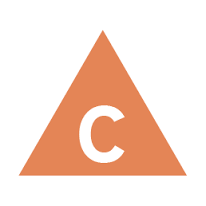Core Competencies
Core competencies are sets of intellectual, personal, and social and emotional proficiencies that all students need to develop in order to engage in deep learning and life-long learning.
Communication -The communication competency encompasses the set of abilities that students use to impart and exchange information, experiences and ideas, to explore the world around them, and to understand and effectively engage in the use of digital media.
Profile 1: Can the student connect and engage with others to share and develop ideas? Explain.
Profile 2: Can the student acquire, interpret, and present information? When the student makes inquires, can they explain them? Explain.
Profile 3: Can the student collaborate to plan, carry out, and review constructions and activities? Explain.
Profile 4: Can the student explain/recount and reflect on experiences and accomplishments? Explain.
Thinking – The thinking competency encompasses the knowledge, skills and processes we associate with intellectual development. It is through their competency as thinkers that students take subject-specific concepts and content and transform them into a new understanding. Thinking competence includes specific thinking skills as well as habits of mind, and metacognitive awareness.
Creative Thinking
Profile 1: Can the student generate creative and innovative ideas that have value? Explain.
Profile 2: Can the student generate ideas both as an individual and as part of a collaboration that builds on the ideas of others? Explain.
Profile 3: Can the student evaluate, refine, and work to realize a creative idea? Explain.
Critical Thinking
Profile 1: Can the student analyze and make judgments about a work, a position, a process, a performance, or another product or act? Explain.
Profile 2: Can the student engage in an inquiry and investigation where they identify and explore questions or challenges related to key issues or problematic situations in their studies, their lives, their communities, and the media? Explain.
Profile 3: Can the student apply critical thinking to create, design or transform products, methods, performances, and representations in response to problems, events, issues, and needs? Explain.
Personal and Social – Personal and social competency is the set of abilities that relate to students’ identity in the world, both as individuals and as members of their community and society. Personal and social competency encompasses the abilities students need to thrive as individuals, to understand and care about themselves and others, and to find and achieve their purposes in the world.
Personal and Cultural Identity
Profile 1: Does the student understand that their relationships (friends, family, teachers, coaches, etc…) and cultural contexts help to shape who they are? Explain.
Profile 2: What does the student value? How do these values affect the student’s choices and life experience? Explain.
Profile 3: What are the student’s strengths and abilities? Can the student consider how these assets can help in all aspects of life? Explain.
Personal Awareness and Responsibility
Profile 1: Students who are personally aware and responsible have a sense of personal efficacy and confidence in a variety of situations. They value themselves, their ideas, and their accomplishments. They are able to express their needs and seek help when they need it, to find purpose and motivation and act on it, and to advocate for themselves. To what extent has the student developed a sense of social awareness and responsibility?
Profile 2: Students who are personally aware and responsible take responsibility for their own choices and actions. They set goals, monitor progress, and understand and regulate their emotions. They are aware that learning involves patience and time. They are able to persevere in difficult situations, and to understand how their actions affect themselves and others. How does the student self-regulate? Explain.
Profile 3: Students who are personally aware and responsible recognize how their decisions and actions affect their mental, physical, emotional, social, cognitive, and spiritual wellness, and take increasing responsibility for caring for themselves. They keep themselves healthy and physically active, manage stress, and express a sense of personal well-being. To what extent does the student recognize the importance of happiness, and have strategies that help them find peace in challenging situations?
Social Responsibility
Profile 1: Can the student contribute to community and care for the environment? Explain.
Profile 2: Does the student appreciate different perspectives on issues? Can the student generate, use, and evaluate strategies to resolve problems? Explain.
Profile 3: Socially responsible students value diversity, defend human rights, advocate for others, and act with a sense of ethics in interactions, including online. Can the student act in a socially responsible manner? Explain.
Profile 4: Can the student develop and maintain positive peer and intergenerational relationships in a variety of contexts? Explain.


